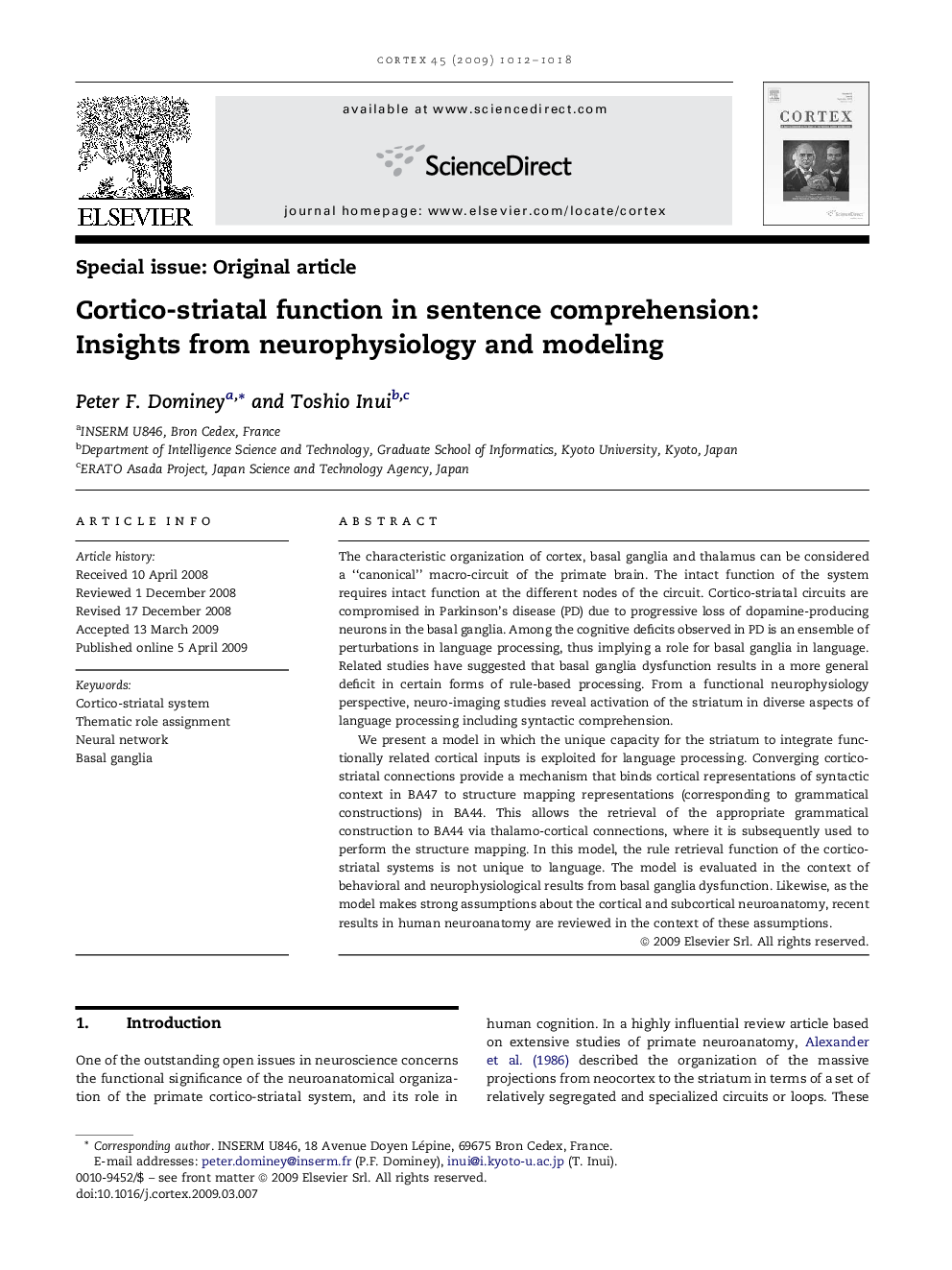| Article ID | Journal | Published Year | Pages | File Type |
|---|---|---|---|---|
| 942431 | Cortex | 2009 | 7 Pages |
The characteristic organization of cortex, basal ganglia and thalamus can be considered a “canonical” macro-circuit of the primate brain. The intact function of the system requires intact function at the different nodes of the circuit. Cortico-striatal circuits are compromised in Parkinson's disease (PD) due to progressive loss of dopamine-producing neurons in the basal ganglia. Among the cognitive deficits observed in PD is an ensemble of perturbations in language processing, thus implying a role for basal ganglia in language. Related studies have suggested that basal ganglia dysfunction results in a more general deficit in certain forms of rule-based processing. From a functional neurophysiology perspective, neuro-imaging studies reveal activation of the striatum in diverse aspects of language processing including syntactic comprehension.We present a model in which the unique capacity for the striatum to integrate functionally related cortical inputs is exploited for language processing. Converging cortico-striatal connections provide a mechanism that binds cortical representations of syntactic context in BA47 to structure mapping representations (corresponding to grammatical constructions) in BA44. This allows the retrieval of the appropriate grammatical construction to BA44 via thalamo-cortical connections, where it is subsequently used to perform the structure mapping. In this model, the rule retrieval function of the cortico-striatal systems is not unique to language. The model is evaluated in the context of behavioral and neurophysiological results from basal ganglia dysfunction. Likewise, as the model makes strong assumptions about the cortical and subcortical neuroanatomy, recent results in human neuroanatomy are reviewed in the context of these assumptions.
